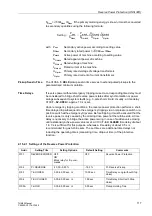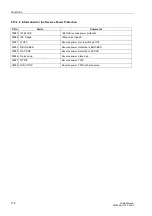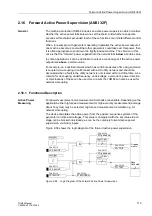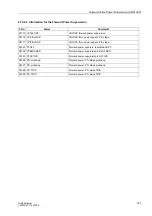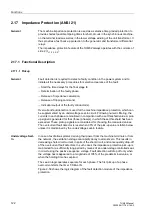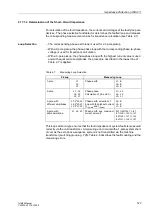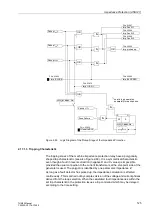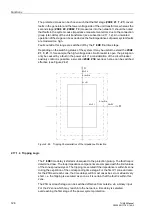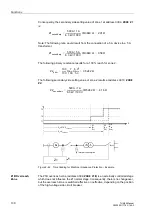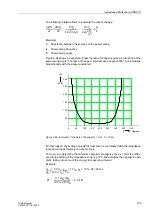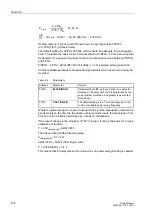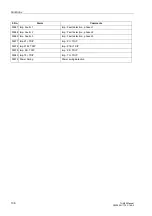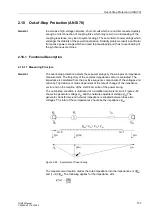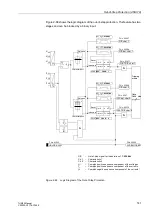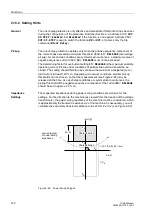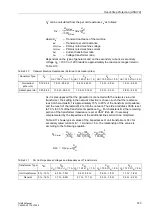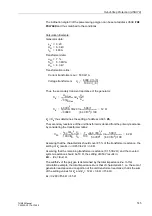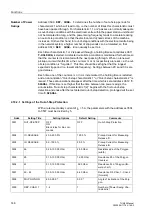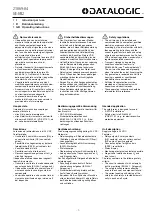
Impedance Protection (ANSI 21)
131
7UM62 Manual
C53000-G1176-C149-3
The Z1B zone is usually switched effective with an open high-voltage circuit breaker.
In this case, every impedance protection pickup can only be due to a fault in the
protection zone of the block, as the power system is disconnected from the block.
Consequently, the undelayed tripping zone can be extended to 100 % to 120 % of the
protection zone without any loss of selectivity.
The Z1B zone is activated via a binary input controlled by the circuit breaker auxiliary
contact (see figure 2-62). The overreach zone is assigned to an individual
time delay.
Final Stage
In case of short circuits outside the Z1 and Z2 zones, the relay functions as a time-
delayed overcurrent protection. Its nondirectional final time
is selected in a way
that its time value overreaches the second or third stage of the series-connected
network distance protection.
2.17.3 Power Swing Blocking
General
Dynamic occurrences such as sudden load changes, short-circuits, automatic reclo-
sures or switching operations within the power system may cause power swings.
Therefore, the impedance protection is complemented by a power swing blocking
function to avoid spurious tripping.
Power swings are three-phase symmetrical occurrences. The first prerequisite is
therefore the symmetry of the phase currents, which is verified by evaluation of the
negative sequence current. This means that asymmetrical (all single-phase and two-
phase) short-circuits cannot cause the power swing blocking to pick up. Even if a pow-
er swing has been detected, the asymmetrical short-circuits following it quickly deac-
tivate the power swing blocking and make a trip by the impedance protection possible.
Since a power swing happens much more slowly than a short-circuit, the rate of
change of the impedance is a reliable criterion for its identification. Because of its sym-
metrical nature, the positive sequence impedance obtained from the positive se-
quence components of the currents and voltages is evaluated.
Logic
Figure 2-63 shows the logic diagram of the power swing blocking. In the upper section,
the current symmetry monitoring can be seen. A release signal is given if there is a
three-pole pickup with no negative sequence system current. For detection of power
swings, a power swing polygon (P/SPOL) is used which is greater than the trip polygon
(TPOL). The distance between the two polygons can be set (common setting for R and
X direction). The user can choose for each setting parameter whether the trip polygon
refers only to characteristic Z1 or to characteristics Z1 & Z2. In the latter case, the trip
polygon is the maximum impedance value.
Measuring
Principle
The criterion for power swing blocking is composed of the power swing polygon, its
distance to the trip polygon, the trip polygon itself and the rate of change of the imped-
ance. The protection compares the first impedance value after entering the power
swing polygon (at a moment Tent) with the last impedance value outside the polygon
(at a moment Tent-
∆
t). The time
∆
t is determined by the measuring interval, which is
one cycle. If the rate of change of the impedance vector thus determined is less than
a set value
∆
Z/
∆
t, a power swing is detected. The impedance stage is not blocked,
however, until the impedance vector enters the trip polygon TPOL.
If the first impedance value is both inside the P/SPOL and the TPOL, the protection
detects immediately a short-circuit, because there must be at least one impedance
value between the P/SPOL and the TPOL. The distance between the power swing

